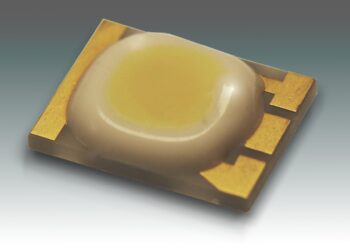According to Brandessence Market Research, the System-On-Chip Market is expected to grow at 8.15% CAGR, as tech giants like Microsoft, Apple, Amazon, and others jump into the R&D for the ‘next big thing’ in chips catering to AI functions. System-on-chip or SOC are designed to be mini-computers with memory blocks, control units, timing units, and interfaces powered by a single chip. As demand for advanced chips to drive growth of small smart devices like wearable watches grows, the innovation remains key to growth of the SOC market.
Demand for advanced functions like automated tracking, signaling, monitoring, connecting, and digital communication has led to robust innovation of advanced nano-chips. As demand for functionality rises, simultaneously, demand for smaller chips with more functions, storage, and faster speed rises. Furthermore, horizons of AI have made conventional and essentially ‘reactive’ functioning module of chips, completely outdated. This has created a tremendous demand for completely new innovation in chips catering to AI-driven cars, telecommunication, consumer electronics, healthcare devices, and industrial applications.
System-On-Chip Market: Key Trends
In December 2020, Microsoft announced that it is working on an in-house processor design to power a SOC chip for computers used in its data centers. According to Microsoft, this chip would enable the company to deliver features that would reduce its reliance on Intel’s technology. There are two main reasons for Microsoft to take this strategic direction. On one hand, designing the future of smart computing and controlling is a key strategic advantage for a software maker. On the other hand, new generation chips are sought after by Microsoft’s key rival in the cloud business, Amazon. Amazon has reported that its newly designed SOC chips are ideally suited for advanced functions, while simultaneously bring down costs, and increase performance.
The high initial costs of design, and later maintenance costs are some restraints in growth of the SOC market. While the designing costs do not represent a challenge to big technology giants like Microsoft, and Amazon, these pose high-barriers for small players. Hence, ventured funded start-ups represent a key to adoption of new SOC chips to overcome this restraint. The demand for SOC chips for smart, and electronic devices with rising adoption of IoTs remains a promising prospect to recover investments in the SOC market.
Energy efficiency also remains a strong driver to growth of the SOC market. Apart from personal devices, Nano-devices are ideal for monitoring patient health in healthcare. Nano devices are also essential in industrial application, wherein automated robots, conventional manufacturing processes need to be monitored for safety, hygiene, efficiency in real-time. The next-gen SOC chips with advanced energy efficiency, storage capacities, and AI-driven capabilities to respond to emergencies are ideal for growing requirements in new applications.
System-On-Chip Market: Covid-19 Impact
The covid-19 has had a limited impact on growth in the system-on-chip market. The large investments in developing technologies, and its reliable future application sheltered investments in chip designs in the market. However, the slowdown in venture investments to support new startups during the pandemic remained a minor restraint. The growing relaxation in covid-19 norms around the world, and growing prospect of vaccination are likely to spur growth of investments in the near future, with technologies to build next-gen electric vehicles, smart devices, cloud adoption, and smart infrastructure remaining key to growth.
The covid-19 led its worst impact on the market with disruption in labor force. The lack of conventional communication, increased danger, hospitalization, and fatalities forced a shift in attitudes among the labor force. In 2021, major tech firms continue to face higher rates of attrition, with growing competition for highly skilled labor, and increased change in attitudes towards employment globally. The labor trends are likely to drive increased manufacturing in Asia Pacific, while automation becoming far more important to global technology companies.
System-On-Chip Market: Competitive Analysis
The system-on-chip market remains fragmented, despite the heavy-costs of intial investments. The global race to deliver the next-gen chip, and its implications for key needs like national security, aviation, transport, logistics, and others remain a promising driver of its growth. Some key players in the global system-on-chip market are Microsoft, Amazon, MediaTek Inc., Qualcomm Technologies, Inc., HiSilicon (Shanghai) Technologies CO, Infineon Technologies AG, Broadcom, STMicroelectronics, Intel Corporation, among others.
The demand for SOC chips in smart electronic devices remains the key opportunity for growth. Microsoft has already installed new SOC chips on its surface devices, making way for advanced graphical integration, along with tremendously fast processing speeds, for conventional applications, as well, future applications like complete cloud integration. In March 2021, Samsung announced a partnership with Marvell to develop a new chip to offer enhance 5G performance. The new chip is another evidence of growing competition among technology giants globally to deliver the next big thing in key niches like IoT, machine learning, and AI. Similar developments also took place when Mediatek Inc announced acquisition of Intel Enpirion for $85 million. The deal positions Mediatek to deliver integrated power solutions to deliver the next-gen chip performance in enterprise-level systems.
System-On-Chip Market: Regional Analysis
The system on chip market report is divided into North America, Europe, Asia pacific, Latin America, and Middle East & Africa. Among these, the North America is expected to hold largest share of the global revenues. The growing advents like automatic electric cars, trends like manufacturing 4.0, and growing investment in chip manufacturing by key players remain key drivers of growth in the region. The Asia Pacific is likely to register fastest growth, as various new players from China continue to engage in indigenous innovation, creating new opportunities for growth. South korea also remains a key country for innovation, thanks to tremendous penetration of high-speed connectivity, high-disposable income, and horizons of new technologies with introduction of 5G remain key drivers.
System-on-chip market in Europe also remains a promising prospect. In March 2021, over 24 countries in the EU region deployed 5G infrastructure. Furthermore, Europe remains an extremely diverse home of communication players, as nearly 15 key players continue to develop 5G infrastructure in the region.








